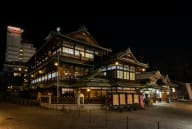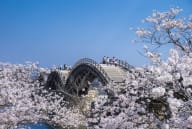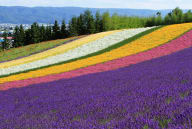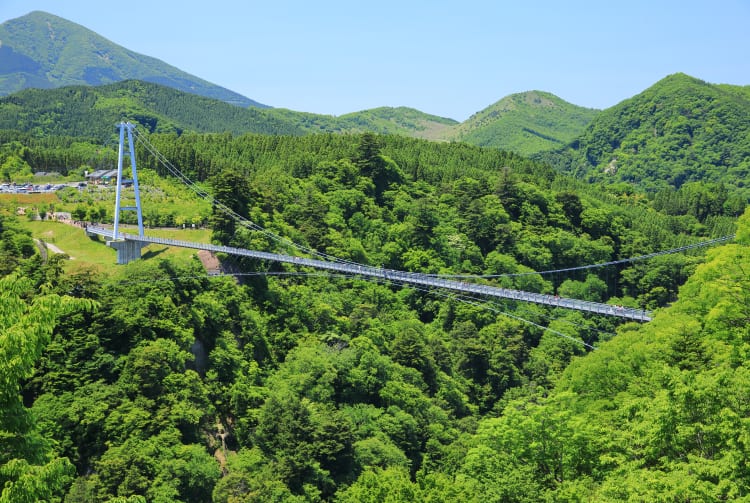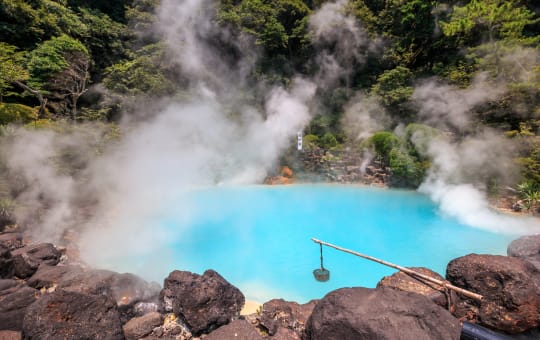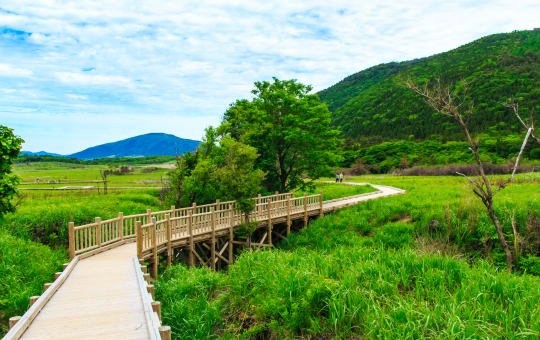Suspendu en plein air au-dessus d'une vallée boisée
En traversant le grand pont suspendu de Kokonoe Yume, dans l'ouest de la préfecture d'Oita , on a l'impression de marcher en plein ciel. C'est le pont piéton le plus long et le plus élevé de tout le Japon. On y profite d'un panorama exceptionnel sur la campagne verdoyante d'Oita, notamment sur deux cascades, la rivière Naruko et la vallée à 173 mètres en contrebas.
À proximité, le massif des monts Kuju et les hauts plateaux de Handa se prêtent très bien à la randonnée. La région abrite également le marais de Tadewara ainsi que plusieurs villes thermales, dont la principale est Kurokawa Onsen.
À ne pas manquer
- Admirer les cascades Shindo no taki et Medaki, parmi les plus belles du Japon
- Partir à la rencontre de la faune diverse de l'immense forêt de Narukogawa Keikoku
- Gravir les monts Mimata et Waita dans le massif des monts Kuju
Comment s'y rendre
La gare d'Oita est desservie par les lignes principales Kyudai, Hohi et Nippo, qui permettent d'accéder à une bonne partie de Kyushu.
Prenez le train sur la ligne principale Kyudai jusqu'à la gare de Bungo-Nakamura, puis empruntez un bus local pour arriver au pont.
Une traversée de masse
Le pont est conçu pour supporter 1800 personnes à la fois, ce qui peut sembler beaucoup au premier abord… mais il faut savoir que 300 000 personnes l'ont traversé au cours de son premier mois d'activité en 2006. La vue depuis le pont est époustouflante tout au long de l'année. Cependant, la meilleure période pour s'y rendre se situe entre avril et début décembre, et plus particulièrement de mi-avril à mai lorsque la vallée se pare d'un feuillage vert luxuriant. En novembre, ce sont les couleurs chaudes de l'automne qui prennent le relais.
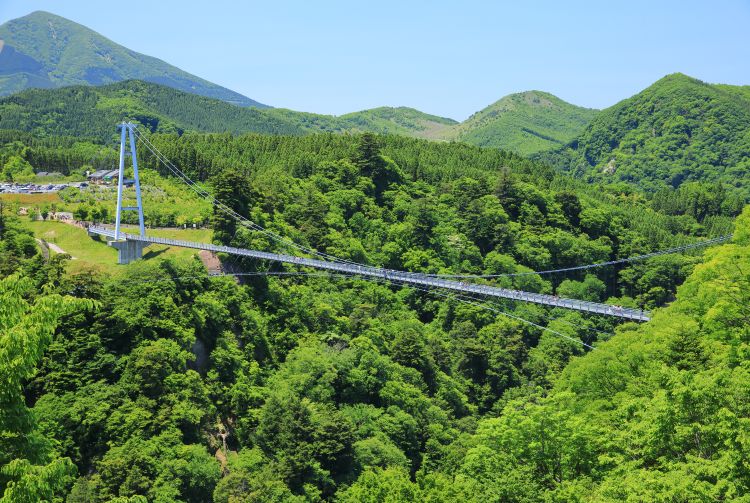
À la découverte des montagnes, hauts plateaux et marais environnants
Situées dans le parc national d'Aso-Kuju, les collines des hauts plateaux de Handa s'élèvent entre 800 et 1200 mètres d'altitude. Le lieu est idéal pour une balade en campagne, à proximité de plusieurs sources chaudes dont Kanno Jigoku, Ukenokuchi et Chojabaru. Le massif des monts Kuju est quant à lui l'endroit rêvé des marcheurs, qu'ils soient débutants ou expérimentés.
Enfin, à l'ouest des monts Kuju se situe le marais de Tadewara , un écosystème protégé et conservé avec soin. Sa flore compte de nombreuses espèces rares et menacées qui sont toutes présentées en anglais au centre d'information.
Services utiles
Vous pouvez emprunter un fauteuil roulant gratuitement au centre d'information touristique du côté Nakamura, ainsi qu'au guichet du côté Kitagata. Des casiers gratuits, un grand parking, des distributeurs, des toilettes et un centre d'information touristique avec Wi-Fi sont également à votre disposition.
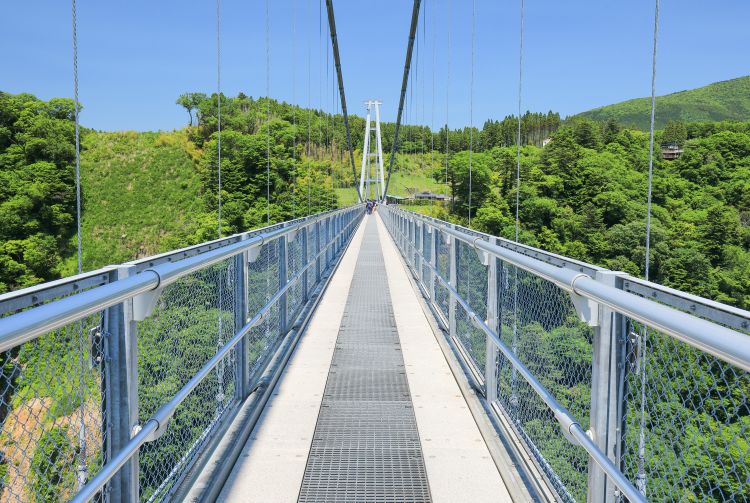
Quelques restrictions
L'accès au pont peut être fermé en raison de conditions météorologiques défavorables, d'une catastrophe naturelle ou de périodes de trop grande affluence. Il est interdit de piloter un drone, de s'asseoir, de courir et d'utiliser un parapluie sur le pont.
En raison de la grille située au milieu du plancher du pont, veuillez éviter d'utiliser une cane trop fine ou de porter des talons hauts.

Bien plus qu'un pont
La ville d'Oita est connue pour ses nombreux produits frais et ses habitants chaleureux. Si vous appréciez la nature et le confort, prévoyez de passer quelques jours à Oita. Les nombreux onsen du coin invitent à la détente et le mont Takasaki, qui abrite des singes, est tout près.
















